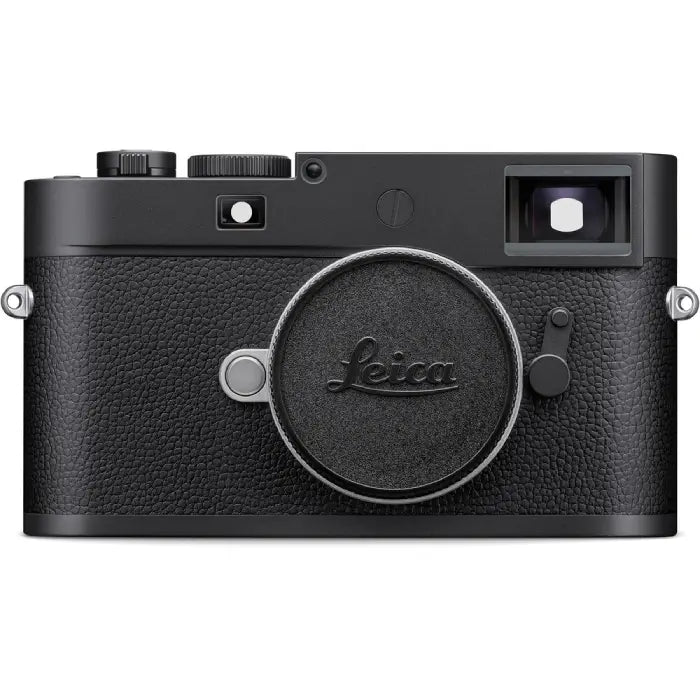
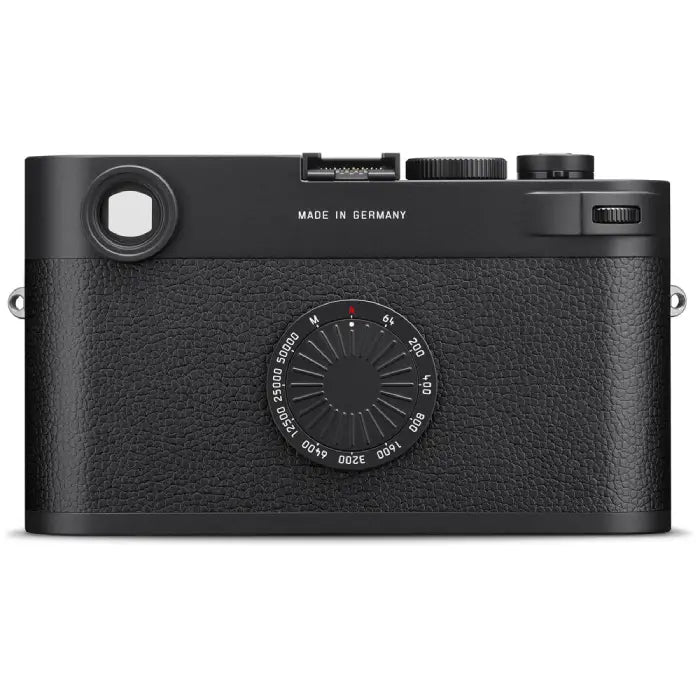
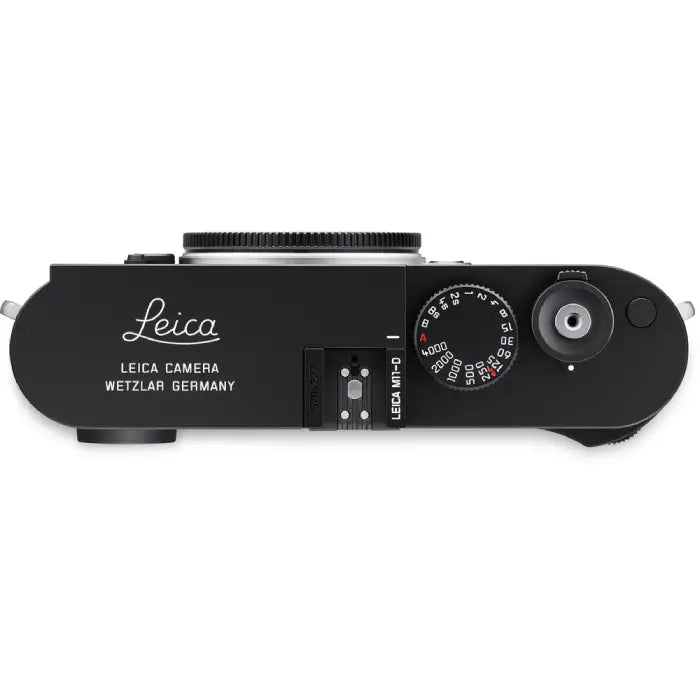
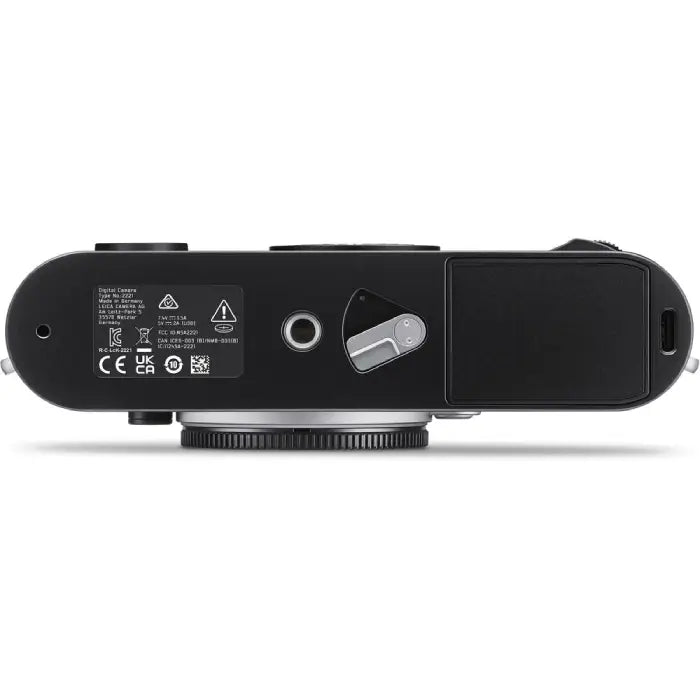
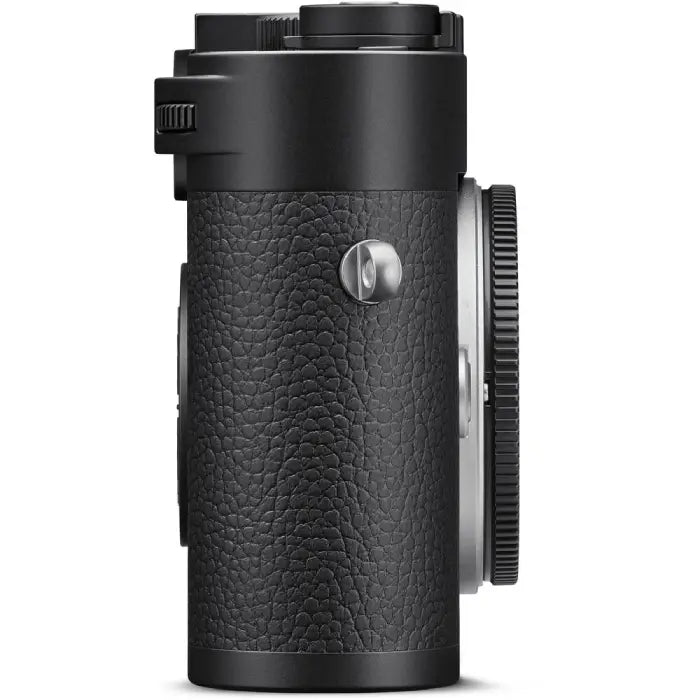
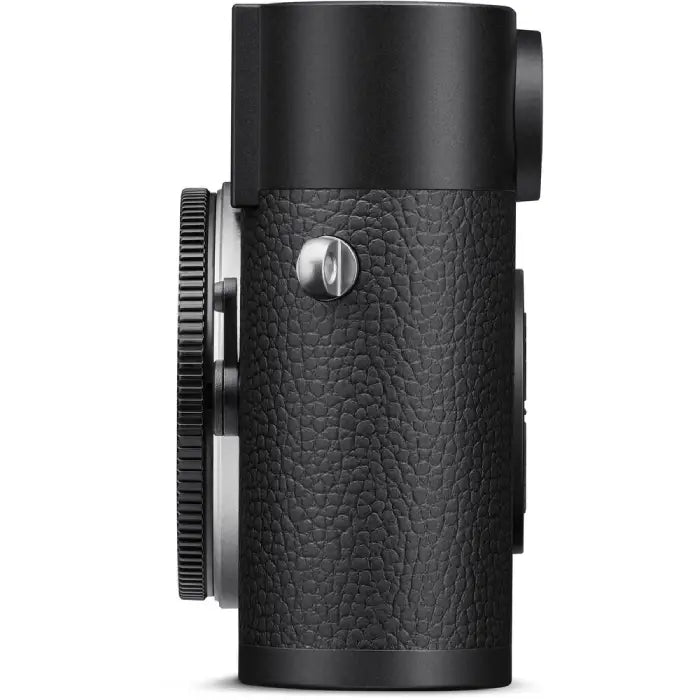
Leica M11-D Rangefinder Camera Body (Black)
Tax included. Shipping calculated at checkout
- 60MP Full-Frame BSI CMOS Sensor
- Iconic Design with No Logo & No Screen
- ISO Dial Located on Back
- Leica Content Credentials Technology
- Optical 0.73x-Magnification Viewfinder
- Internal 256GB Memory and SD UHS-II Slot
- ISO 64-50000, Up to 4.5-fps Shooting
- Wi-Fi & USB Type-C, Dedicated FOTOS App
- Lightweight Aluminum Top Plate
- Electronic Shutter, Multi-Field Metering
What's Included

Introducing the Leica M11-D Rangefinder Camera Body. This digital camera pays homage to its analog roots with a traditional ISO dial instead of a rear display. Combining the best of both worlds, the M11-D offers advanced technology and a truly authentic film-like shooting experience. Join Leica's century-long legacy with the M11-D.
Iconic Design with No Screen
The M11-D is a unique Leica camera that eliminates the rear LCD screen and features an ISO dial instead. It also has an iconic design with a more discrete profile.
- Rear screen has been replaced with mechanical ISO dial.
- Unobstrusive no logo design and dark chrome viewfinder.
- Engraved Leica script on the top cover plate.
- Internal storage to 256GB.
Leica Content Credentials with Content Authenticity Initiative Technology
M11-D features Content Authenticity Initiative (CAI) tech. Collaboration between Adobe, The New York Times, and Leica. Goal is to establish digital content attribution standard. Leica Content Credentials uses secure chip to encrypt metadata at capture point. Independently verifiable and can be added to with compatible apps like Adobe Photoshop. Provides viewers with confidence and creators with additional credit.
60MP Full-Frame BSI CMOS Sensor
The M11-D camera body features a high-resolution, 60MP full-frame CMOS sensor with improved noise performance and faster readout speeds. This makes it suitable for detail-oriented applications and low-light conditions with higher ISOs. Additionally, the sensor has an ultra-thin dual-layer filter glass for greater clarity and accurate rendering with M lenses.
Triple Resolution Technology
M11-D Camera has Triple Resolution Technology, allowing for 60MP, 36MP, or 18MP output, with improved dynamic range and noise levels.
- 60MP: 14 stops of dynamic range, highest resolution
- 36MP: 15 stops of dynamic range, best balance of resolution and noise
- 18MP: 15 stops of dynamic range, lowest noise levels
Maestro III Image Processor
The Maestro III processor enhances processing speed and Triple Resolution Technology, resulting in a wider sensitivity range of ISO 64-50000 on the M11-D. This allows for superior detail, quality, and color rendering at lower ISO settings. Continuous shooting at 4.5 fps and quick file saving are also made possible by the Maestro III for a seamless shooting experience.
Imaging Improvements
The M11-D is still a photo-only camera that prioritizes manual operation, but a variety of improvements and functional updates have been made to make the M11-D the most contemporary M camera yet:
- Electronic shutter allows for faster shooting (up to 1/16,000 sec) without ND filters. Mechanical shutter supports speeds up to 1/4000 sec and flash sync at 1/180 sec.
- Digital zoom steps can simulate longer focal lengths (1.3x and 1.8x) and are reversible when shooting DNG or permanent with JPG.
- Multi-field exposure metering is available in addition to spot and center-weighted average, which helps reduce the need to meter and then re-compose before shooting.
- Long Exposure Noise Reduction helps to reduce the appearance of noise but can also be disabled for faster saving times.
Traditional Rangefinder Design
The M11-D features a timeless design inspired by the original M camera, the M3, from 1954. This classic and recognizable form prioritizes intuitive handling and shooting along with a sleek and minimalist appearance. The M11-D is particular captures the analog mindset by eschewing the rear LCD found on modern digital cameras and replacing it with an ISO dial.
Optical Viewfinder
The large 0.73x-magnification rangefinder has automatic parallax compensation and bright-line frame lines that match the image sensor size at a focusing distance of 6.6'. Use the viewfinder frame selector on the front of the camera to manually change the image field for different focal lengths. Options include 35mm/135mm, 28mm/90mm, and 50mm/75mm pairs.
Updated Body Design and Handling
The M11-D is similar to past M cameras but has notable changes to its body. The black finish version features an aluminum top plate and is 20% lighter than silver-chrome models. It uses a new BP-SCL7 battery with 64% greater capacity, allowing for up to 700 shots per charge. The design includes a single UHS-II SD memory card slot and a USB type-C port for in-camera battery charging and file transferring.
Wired and Wireless Connectivity
- The USB type-C port can be used in conjunction with the included FOTOS Cable, which allows direct attachment to an Apple iPhone via the Leica FOTOS app for easy file management and sharing.
- Wi-Fi and Bluetooth can also be used for wireless connecting the camera to an iOS device using the FOTOS app.
- In-app geotagging is possible along with the ability to select favorites and apply ratings to images via your mobile device.
| Product Brand | Leica |
|---|---|
| SKU | 20222 |
| Megapixels | 60 |
| Lens Mount | Leica M |
| Connectivity | WiFi + Bluetooth |
